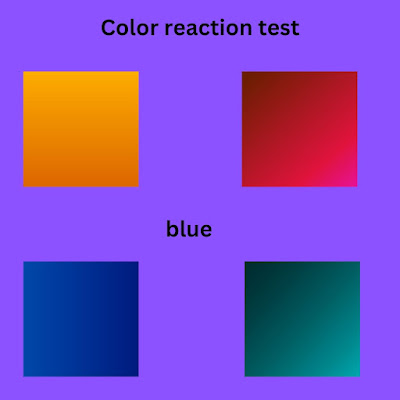Can Reaction Time Be Improved by Specific Types of Training or Drills?
Online reaction time test is a crucial component of many activities, such as sports, driving, and work-related tasks. The ability to quickly and accurately respond to stimuli can mean the difference between success and failure in these areas. Therefore, many people are interested in ways to improve their reaction time. In this article, we will explore whether specific types of training or drills can help improve reaction time.
First, let's define what we mean by reaction time. Reaction time is the time it takes for an individual to respond to a specific stimulus. It is typically measured in milliseconds and can be affected by a variety of factors, including age, gender, physical fitness, cognitive abilities, and more.
There are various types of reaction time training and drills that individuals can perform to improve their reaction time. Some of these include:
Visual reaction time training: This type of training involves the use of visual cues to improve reaction time. For example, an individual may be asked to respond as quickly as possible to a flashing light or a visual stimulus on a computer screen.
Auditory reaction time training: This type of training involves the use of auditory cues to improve reaction time. For example, an individual may be asked to respond as quickly as possible to a beep or a specific sound.
Sport-specific reaction time training: This type of training involves the use of drills and exercises specific to a particular sport or activity. For example, a basketball player may practice reacting quickly to an opponent's movements on the court.
Virtual reality training: This type of training involves the use of virtual reality technology to simulate real-life scenarios and improve reaction time. For example, a firefighter may practice responding quickly and efficiently to a simulated fire.
So, can these types of training and drills actually improve reaction time? The answer is yes, but to what extent may vary.
Several studies have shown that visual and auditory reaction time training can improve reaction time. For example, a study published in the Journal of Strength and Conditioning Research found that visual reaction time training improved reaction time in college football players.
Another study published in the Journal of Sports Sciences found that auditory reaction time training improved reaction time in table tennis players.
Similarly, sport-specific reaction time training has been shown to improve reaction time in athletes. For example, a study published in the Journal of Sports Sciences found that reaction time training improved reaction time in soccer players.
Virtual reality training is a relatively new approach to reaction time training, but early research suggests that it may be effective.
A study published in the Journal of Sports Sciences found that virtual reality training improved reaction time in elite rugby players.
It is worth noting that the extent of improvement may vary depending on various factors such as age, gender, baseline reaction time, and training duration.
Additionally, some studies have found that while reaction time may improve with specific training, it may not necessarily translate to improved performance in real-life situations.
In conclusion, reaction time can be improved through specific types of training and drills. Visual and auditory reaction time training, sport-specific reaction time training, and virtual reality training have all been shown to improve reaction time in various studies.
However, the extent of improvement may vary depending on various factors. Therefore, individuals should carefully consider their goals and needs when selecting a specific type of training or drill to improve their reaction time.

.jpg)
Comments
Post a Comment